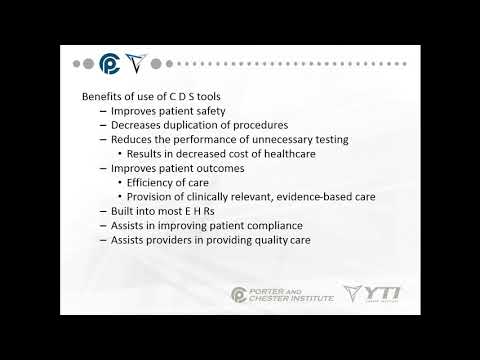Medical Assistants: How Much Do They Really Make?
Contents
- What is a medical assistant?
- What does a medical assistant do?
- How much does a medical assistant make?
- What are the hours of a medical assistant?
- What are the duties of a medical assistant?
- What is the job outlook for medical assistants?
- What are the skills needed to be a medical assistant?
- What are the education requirements for medical assistants?
- What are the certification requirements for medical assistants?
- What are the salary ranges for medical assistants?
Considering a career as a medical assistant? Find out how much Medical assistants make on average, as well as the top-paying industries and states for this profession.
Checkout this video:
What is a medical assistant?
A medical assistant is a healthcare professional who performs various administrative and clinical tasks to support the work of doctors and other health professionals. Most Medical Assistants have completed a postsecondary education program that lasts about a year. Some states require medical assistants to be licensed or certified.
What does a medical assistant do?
A medical assistant is a professional who supports the work of physicians and other health professionals. They perform administrative and clinical tasks in doctors’ offices, clinics, hospitals, and other healthcare facilities.
The duties of a medical assistant vary depending on the size and location of the practice, but they typically include taking medical histories and recording vital signs, scheduling appointments, preparing patients for examinations, assisting with procedures, instructing patients on how to take medications and care for themselves at home, and performing basic laboratory tests. In some states, they may also be allowed to give injections or perform certain diagnostic tests.
How much does a medical assistant make?
In order to get a better understanding of how much medical assistants really make, it is important to first understand the duties of a medical assistant. Medical assistants are healthcare professionals who perform a variety of administrative and clinical tasks in doctor’s offices, hospitals, and other healthcare facilities. They may also be responsible for maintaining medical records scheduling appointments, and assisting with patient billing and insurance claims.
The Bureau of Labor Statistics reports that the median annual salary for medical assistants was $34,800 in 2017, with the top 10% earning more than $49,380. However, salary can vary greatly depending on factors such as location, experience, education, and specialty. For example, medical assistants who work in physicians’ offices tend to earn more than those who work in hospitals or other healthcare facilities. Additionally, those who have earned certifications or completed formal training programs may also earn higher salaries.
So how much does a medical assistant really make? It depends on a variety of factors, but the median annual salary is $34,800. Those who have earned certifications or completed formal training programs may earn higher salaries.
What are the hours of a medical assistant?
The answer to this question depends on the type of employer and the location of the job.
In general, medical assistants work full time, although some may work part time. Hours may be regular or irregular, and include evenings and weekends. Many medical assistants have flexible schedules that allow them to work around their personal schedules.
Medical assistants typically work in physicians’ offices, clinics, hospitals, or other healthcare facilities. In some cases, they may be required to travel to different locations to provide care.
What are the duties of a medical assistant?
Job duties for medical assistants vary depending on state law and the specific medical office in which they work, but there are some common tasks that most medical assistants perform. These include:
• Answering patients’ questions and providing them with instructions from physicians
• Updating and filing patients’ medical records
• Scheduling appointments and maintaining schedules
• Taking patient histories and vital signs
• Drawing blood and performing basic laboratory tests
• Assisting with minor surgical procedures, such as removing sutures
• Arranging for hospital admissions and laboratory services
• Authorizing prescription refills
• Supervising office staff
Some medical assistants specialize in a particular area, such as pediatrics or ophthalmology. Others may be certified to perform more advanced tasks, such as administering anesthesia or taking X-rays.
What is the job outlook for medical assistants?
The job outlook for medical assistants is expected to be good. Employment of medical assistants is projected to grow 29 percent from 2019 to 2029, much faster than the average for all occupations.1 The growing demand for health care services will lead to an increased need for well-trained medical assistants.
As the baby-boom population ages, there will be an increasing need for diagnostic procedures, such as X-rays and laboratory tests, which are often performed by medical assistants. In addition, as new technologies are developed to treat a variety of diseases and ailments, medical assistants will be needed to provide support to health care providers in performing these procedures.
What are the skills needed to be a medical assistant?
Medical assistants are in demand now more than ever.
The job outlook for medical assistants is excellent, with an expected 29% growth in positions from 2016 to 2026.* As the healthcare industry grows, so does the need for well-trained medical assistants.
There are a variety of skills needed to be a successful medical assistant. These include:
-Strong communication skills
-The ability to multitask
-Attention to detail
-The ability to work well under pressure
-Basic computer skills
What are the education requirements for medical assistants?
Education requirements for medical assistants vary by state and employer, but most medical assistants have at least a high school diploma or equivalent. Some states require medical assistants to complete an accredited postsecondary medical assisting program and pass a competency exam, while other states have no formal education requirements. Employers typically provide on-the-job training to new hires.
What are the certification requirements for medical assistants?
There are currently no federal certification requirements for medical assistants, although certain states have certification laws in place. Employers often prefer to hire candidates who have completed a formal education program and/or have earned professional certification.
While there is no single certifying body for medical assistants, the National Board of Medical Examiners (NBME) offers the Certified Medical Assistant (CMA) credential. To be eligible for the CMA credential, candidates must have completed an accredited medical assisting education program and passed a written examination. The CMA credential is valid for 60 months and must be renewed every 5 years through re-examination or completion of continuing education credits.
What are the salary ranges for medical assistants?
Medical assistants perform many important administrative and clinical tasks in doctors’ offices, hospitals, outpatient clinics and other healthcare facilities. They are a vital part of the healthcare team, and their duties can vary depending on the size and location of their employer.
While most medical assistants have at least a high school diploma, some states require certification or completion of an accredited training program. The majority of medical assistants are employed full time, and many work evenings or weekends.
Salary ranges for medical assistants vary depending on factors such as experience, geographic location and type of employer. According to the U.S. Bureau of Labor Statistics (BLS), the median annual salary for medical assistants was $33,610 in May 2019. The lowest 10 percent earned less than $24,280, and the highest 10 percent earned more than $46,840.
The following table shows salary ranges for medical assistants in different geographic regions of the United States as reported by the BLS in May 2019:
-Northeast: $36,040-$48,560
-Midwest: $32,920-$43,880
-South: $31,780-$41,710
-West: $34,800-$46,070







